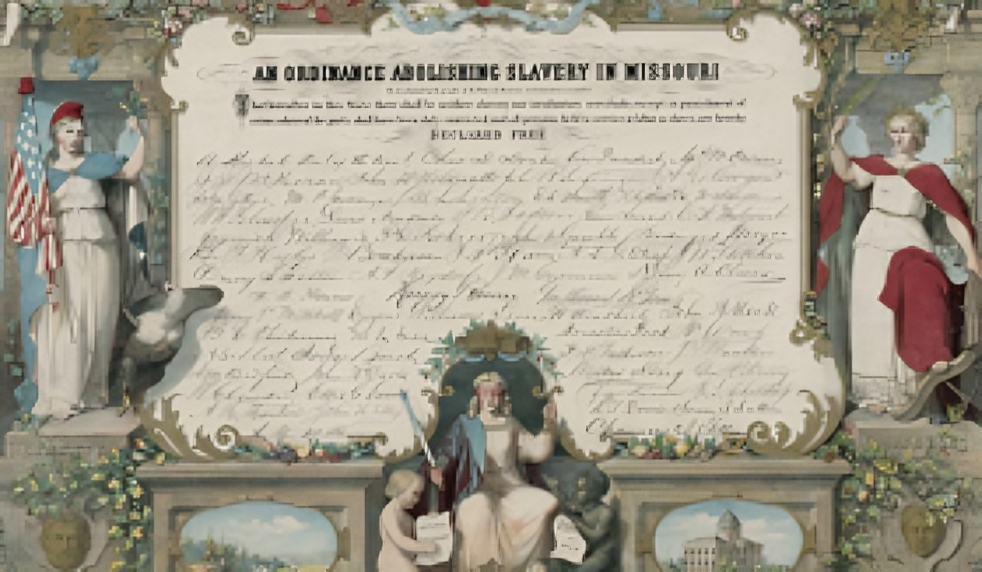
President Lincoln’s Emancipation Proclamation did not have legal effect in the border states that remained in the Union. After the conclusion of the war, but before the ratification of the Thirteenth Amendment, this left slavery intact in these states. Missouri, a border state that maintained the institution of slavery until January 11, 1865, passed the Emancipation Ordinance, commemorated here, prior to ratification of the Thirteenth Amendment.
The “Emancipation Ordinance of Missouri” is a significant document from the American Civil War era, marking Missouri’s formal abolition of slavery. It was adopted on January 11, 1865, during the period of Reconstruction and just before the end of the Civil War.
Here’s a bit more detail on the key figures and context:
E. Knoble
There isn’t a widely known historical figure named E. Knoble directly associated with the Emancipation Ordinance of Missouri. It’s possible that this name may refer to a lesser-known individual or a misspelling. There are no prominent historical records connecting E. Knoble with this ordinance, so more context would be needed to clarify their role.
Theodore Schrader
Similarly, Theodore Schrader does not appear prominently in historical records related to the Emancipation Ordinance of Missouri. This could be another case of lesser-known individuals or perhaps confusion with other historical figures. Schrader might have been involved in local politics or the legislative process, but there is no well-documented evidence of a significant role in this ordinance.
Emancipation Ordinance of Missouri (1865)
The Emancipation Ordinance was a pivotal legal act in Missouri, which had been a slave state but remained in the Union during the Civil War. By early 1865, there was a strong push to end slavery in the state, reflecting the broader national movement towards abolition. This ordinance formally abolished slavery in Missouri and was a key step towards the broader implementation of the Thirteenth Amendment to the U.S. Constitution, which would officially end slavery nationwide.
The ordinance was adopted by the Missouri Constitutional Convention, which had been meeting to revise the state’s constitution to reflect the changes brought about by the Civil War. This act was part of the Union’s broader strategy to integrate freed slaves into the social and economic fabric of the nation and to ensure that the principle of freedom was enshrined in law.
If you have any more specific questions or need further clarification about these individuals or the ordinance, feel free to ask!